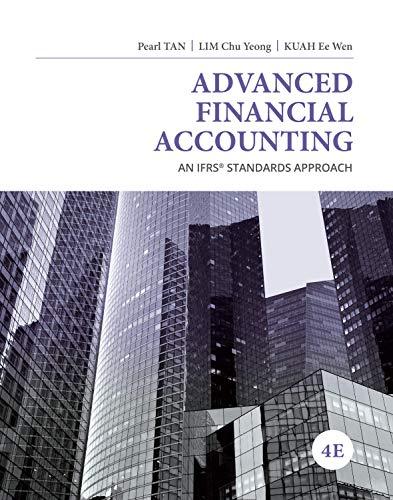On 2 October 2002, the Securities and Exchange Commission (SEC) filed a civil enforcement action against Andrew
Question:
On 2 October 2002, the Securities and Exchange Commission (SEC) filed a civil enforcement action against Andrew S. Fastow, the former Chief Financial Officer of Enron Corp., for alleged fraud. The complaints were related to six transactions, which mainly involved arrangements with outside third parties. These joint investments with third parties were typically structured as separate, special purpose entities (“SPEs”) to which Enron and other investors contributed assets.
SPEs are either consolidated entirely onto the investing company’s statement of financial position or treated as an investment in a separate entity not under the investing company’s control, with off-balance-sheet treatment of the SPE’s assets and liabilities. Under applicable accounting rules in the United States, an SPE could receive off balance-
sheet treatment only if independent third-party investors contributed at least 3% of the SPE’s capital. Details of three of the six transactions are reproduced from an SEC’s release32 as follows:
(a) RADR: “In early 1997, Enron needed to divest itself of certain electricity-generating windmill farms to maintain certain financial benefits under applicable energy regulations. A sale to independent third-party investors would have entailed relinquishing control over these windmill farms, an eventuality Enron wanted to avoid. To maintain control of these assets, Fastow selected certain individuals to act as nominee investors in the entities (collectively referred to as ‘RADR’) that purchased the windmill farms. To provide the funds for the purchase, Fastow made a secret personal loan to Kopper,33 who in turn made loans to the nominee investors.
Between August 1997 and July 2000, these entities generated approximately $2.7 million in unlawful profits.
In July 2000, Enron repurchased the facilities from the entities, generating an additional gain of approximately $1.8 million. Between 1997 and 2000, Kopper made substantial payments to Fastow from these unlawful profits. One mechanism employed to funnel to Fastow money generated by this scheme was a ‘gifting’
program whereby Kopper and Kopper’s domestic partner made annual ‘gifts’ of $10,000 to each member of Fastow’s immediate family. Fastow chose the $10,000 amount to avoid IRS reporting rules.”
(b) Chewco: “In 1997, Enron and the California Public Employees’ Retirement System (CalPERS) were jointventure partners in an off-balance-sheet investment vehicle called Joint Energy Development Limited Partnership (JEDI). When CalPERS wanted to cash out its investment in JEDI prior to investing in a larger Enron venture, Fastow and others at Enron formed a special purpose entity called Chewco to buy CalPERS’
interest in JEDI thereby allowing Enron to continue accounting for JEDI as an off-balance-sheet entity.
Initially, Fastow planned to serve as Chewco’s general partner and as an equity investor, but was advised that his involvement would require disclosure by Enron. Fastow then selected Michael Kopper to fill the Chewco general partner role. Fastow secretly controlled Chewco and Kopper and, by virtue of that control, received a share of Chewco’s profits as kickbacks from Kopper. In addition, Fastow siphoned funds from Enron by using his position as Enron’s CFO to funnel funds to Chewco for his own benefit.”
(c) The Cuiaba Project: “To avoid consolidation of debt related to a power-plant project in Cuiaba, Brazil, and to recognize earnings, Enron entered into a sham sale with LJM1.34 Fastow arranged for LJM1 to buy an interest in the plant despite significant cost overruns, completion delays, and operational problems, after Enron failed to secure an independent buyer. However, in connection with this transaction, Fastow had entered into an unwritten side agreement with Enron (which Enron later honored) requiring Enron to buy back the interest it sold to LJM1 at a guaranteed profit regardless of the risks associated with the project.”
Required:
For each of the three transactions, apply the tests of control and risks, and the rewards of ownership to explain if, and how, Enron had control over the assets or entities in question.
Step by Step Answer:

Advanced Financial Accounting An IFRS Standards Approach
ISBN: 9781285428765
4th Edition
Authors: Pearl Tan, Chu Yeong Lim, Ee Wen Kuah





